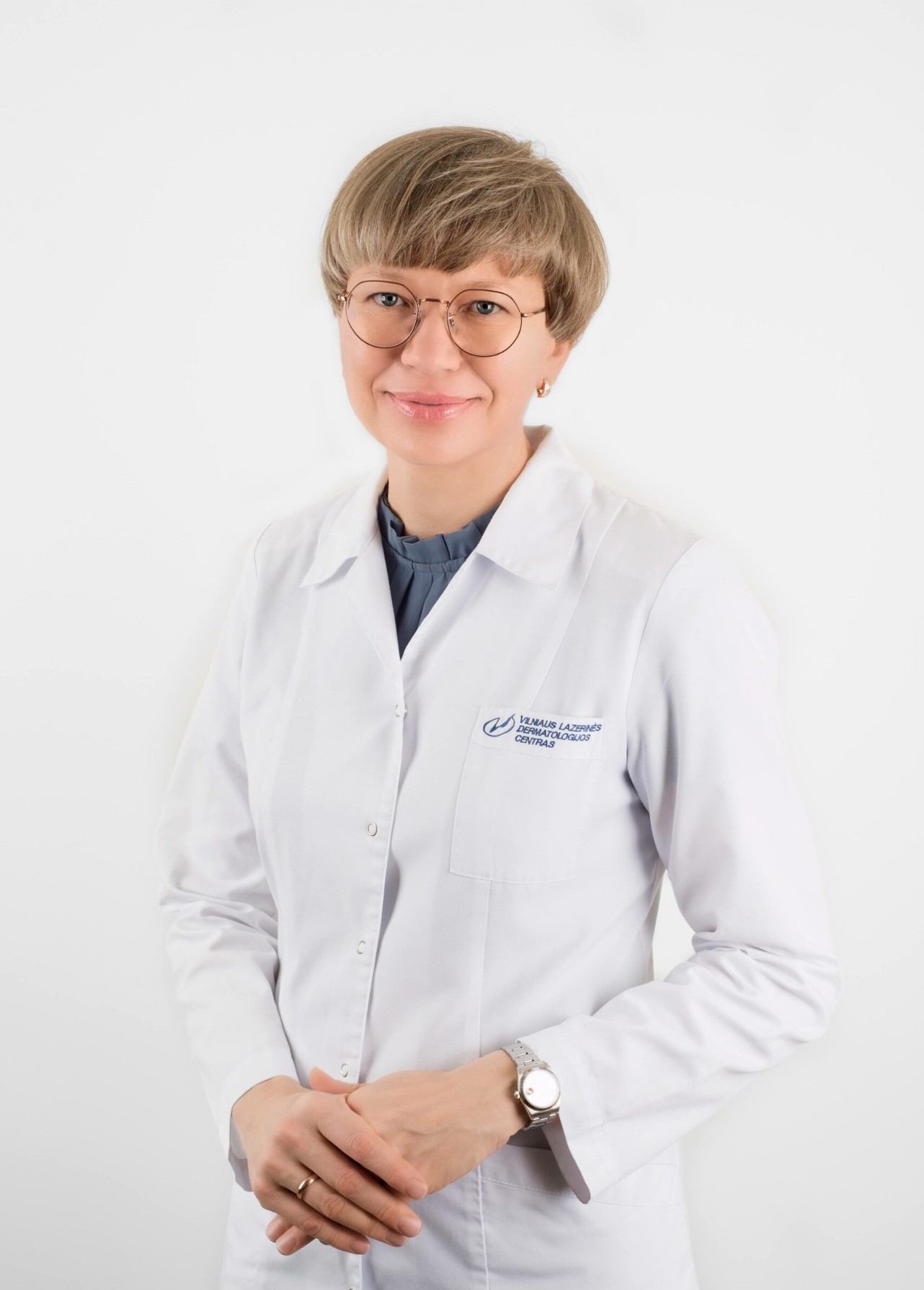Actinic keratosis is a precancerous skin condition characterised by single or multiple irregularly shaped squamous lesions with a rough, scaly surface. The skin lesions characteristic of actinic keratosis are due to proliferation of atypical keratinocytes. If not treated in time, the condition may transform into cutaneous squamous cell carcinoma. Actinic keratosis is often referred to as solar keratosis or radial actinic keratosis, as its main risk factor is prolonged exposure to sunlight.
Risk factors for actinic keratosis:
- Light skin (type I, II, III);
- Long-term exposure to ultraviolet sunlight. Those who spend a lot of time outdoors under the open sun have a higher risk of developing actinic keratosis;
- Past history of sunburn;
- Male gender;
- Older age. However, actinic keratosis has recently been diagnosed in younger patients;
- Immunosuppression.
What are the signs of actinic keratosis?
Actinic keratosis usually develops on areas of the body that receive a lot of sunlight, such as the nose, the top of the head, the ears, the face, the neck, the arms and the shoulders. The first signs of actinic keratosis are when irregularly shaped, scaly, reddened patches or plaques up to 2 cm in size begin to appear, with a very rough surface. Over time, these spots can become multiple, harden, scabby and covered with scales that are difficult to peel. Also, harmful signs of sun exposure are visible, such as hyperpigmentation in the form of blotchy spots, a yellowish tint, telangiectasias and dryness. Some patients may suffer from hypersensitivity of the skin, stinging sensation.
Diagnosis of the disease is made by examination (in rare cases, photographs of skin lesions sent by the patient are suitable), dermatoscopy and/or siascopy, morphological examinations.
When is treatment of actinic keratosis necessary?
Actinic keratosis rarely resolves spontaneously (about 7% of all cases), usually in the early stages of the disease. However, about 20% of actinic keratoses transform into squamous cell carcinoma. Thus, it is recommended to remove all actinic keratoses to prevent the disease, as it is not possible to determine which of them will transform into skin cancer over time.
Treatment of actinic keratosis
- Cryodestruction with liquid nitrogen;
- Laser destruction;
- Photodynamic therapy;
- Treatment with topical chemotherapeutic agents: Imiquimod, 5-fluorouracil.
Single lesions are usually treated with liquid nitrogen or laser destruction therapy, while multiple lesions are treated with imiquimod or 5-fluorouracil. However, an individual treatment plan is drawn up for each patient.






